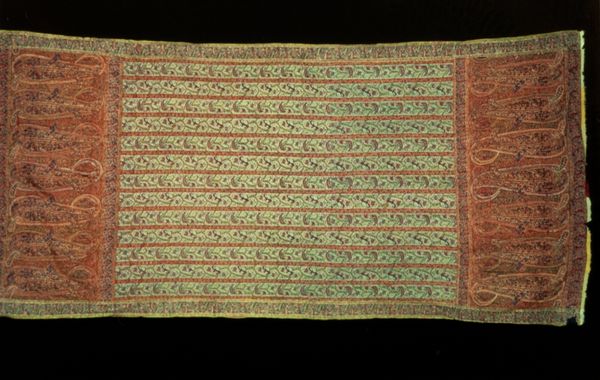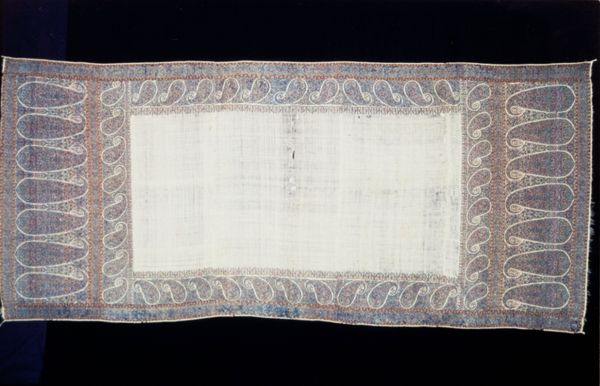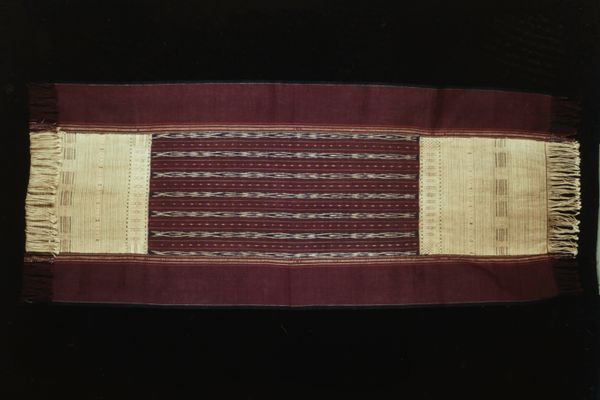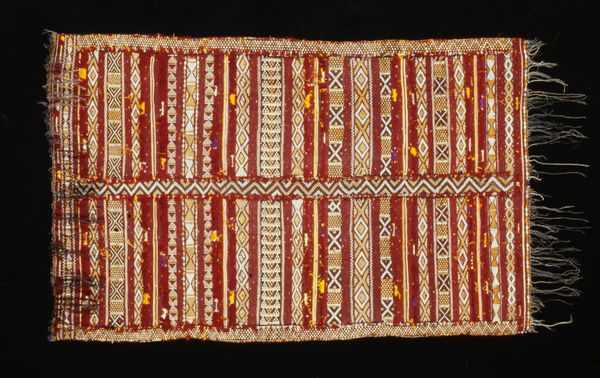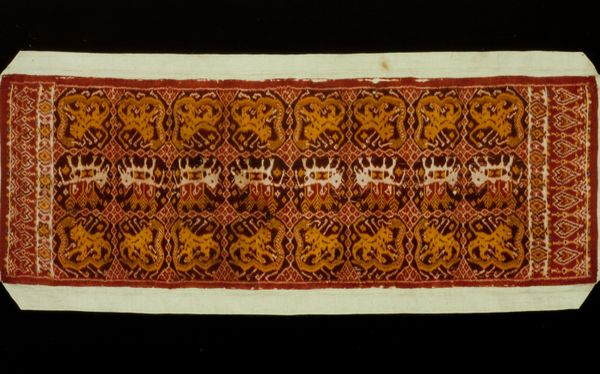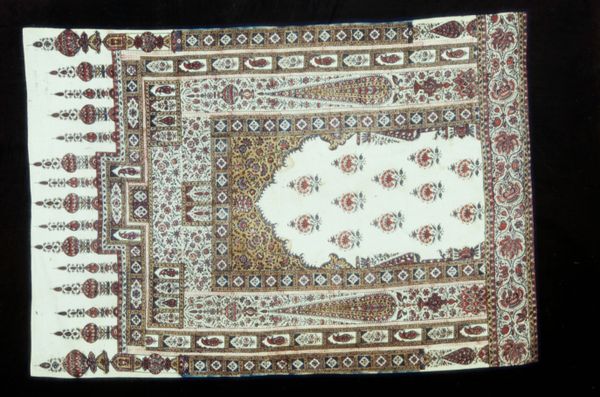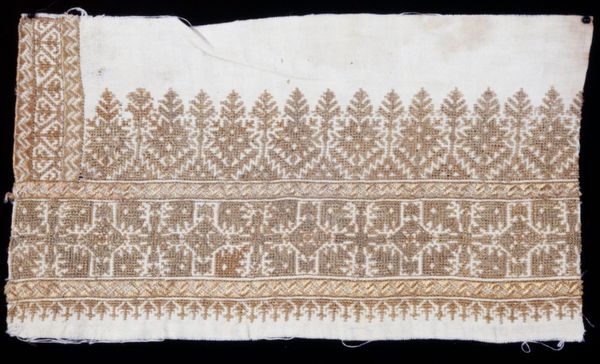
silk, weaving, textile
#
silk
#
weaving
#
textile
#
geometric pattern
#
decorative-art
Dimensions: 85 x 14 1/2 in. (215.9 x 36.8 cm)
Copyright: Public Domain
Curator: This is a sash, estimated to have been made around the 18th century, and it's currently housed here at the Minneapolis Institute of Art. Editor: It's surprisingly delicate. The weave looks fine, and the palette is muted, almost faded, except for the bursts of red. It has a kind of elegant restraint. Curator: Indeed. These sashes weren’t mere accessories, but crucial indicators of social standing. Think of them as wearable emblems of status, deeply connected to the political hierarchies of the time. Editor: And considering it’s likely made of silk – which implies considerable labor and skill in production – its worth was surely very high. What do you make of its overall composition? All these geometric patterns and flowers… Curator: The arrangement speaks to both a fascination with geometry, symbolic of order and status, and an appreciation for the natural world, suggesting a connection to landed wealth and cultural refinement. But who made them is also important. It could have been from a specific community or workshop renowned for this kind of weaving. We can speculate, perhaps based on archival accounts or records of trade. Editor: Right, these were rarely individual creations. And silk weaving involves many specialized hands and machines; where it was woven and how its components were made, used, and worn really dictate what value it held in its time. Curator: The institution that commissioned the sash is central to understanding its value. Royal courts, for instance, were famous for patronizing certain forms of textile and embroidery as signifiers of wealth. Editor: Precisely! The wear and tear, even this far removed, is evidence of the amount of resources and people involved in production. If we can better examine it's stitching and damage, we can speculate how well its initial value was retained by the commissioner! Curator: A compelling viewpoint – by combining perspectives on socio-political symbolism and materiality, we understand it both as a cultural artifact and a testament to human labor. Editor: Agreed; this little piece contains vast histories, from soil to service.
Comments
minneapolisinstituteofart almost 2 years ago
⋮
This Polish sash bears the name of its maker "Paschalis" in the lower corner. Paschalis migrated to Poland from Armenia in 1761.
Join the conversation
Join millions of artists and users on Artera today and experience the ultimate creative platform.
